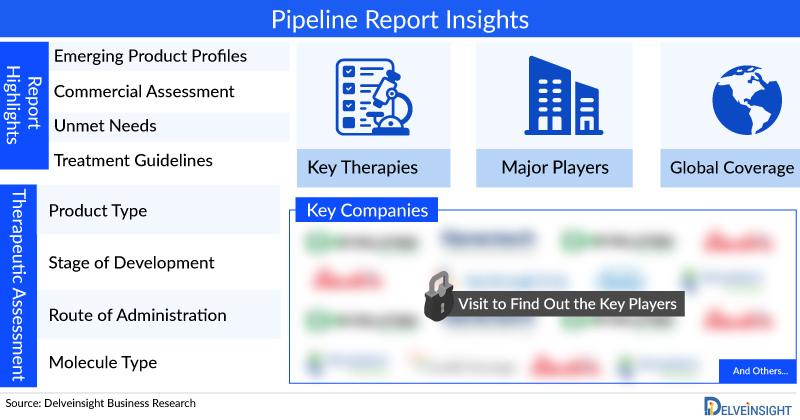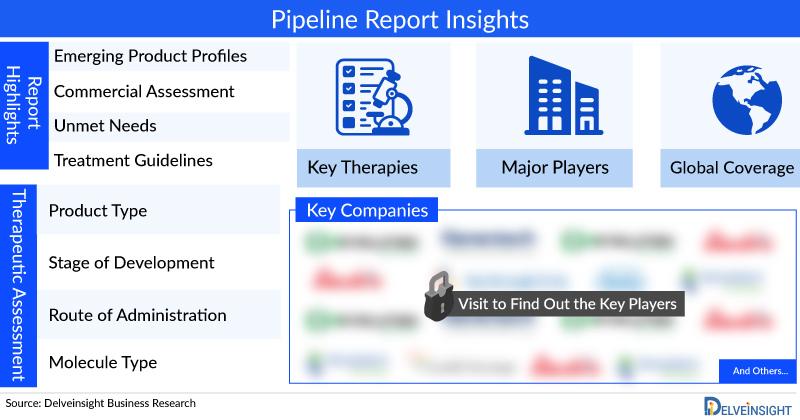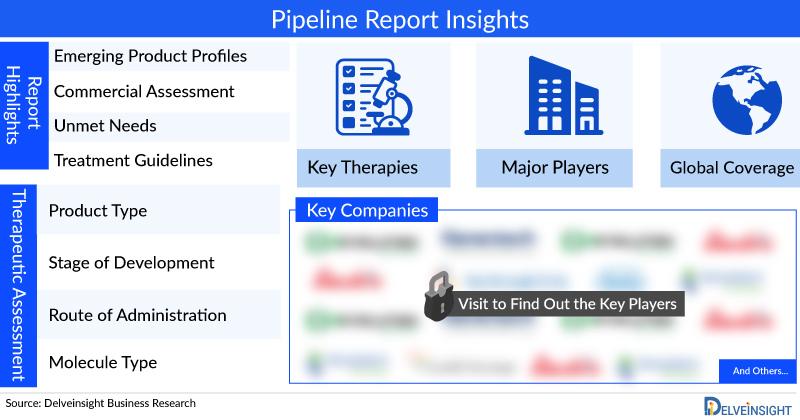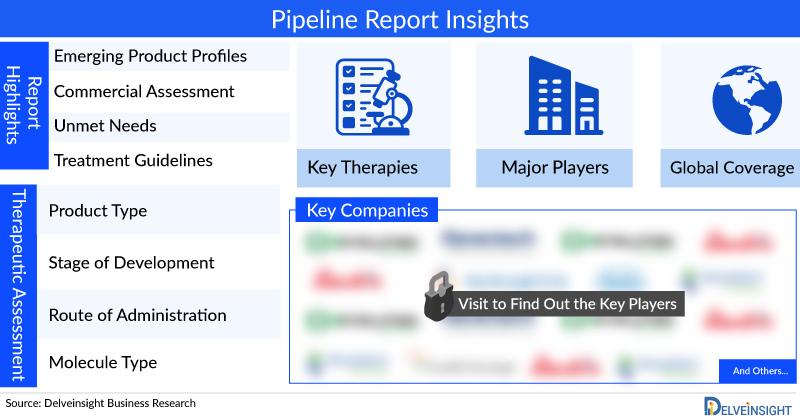Press release
Familial Chylomicronemia Syndrome Pipeline Insight 2025: RNA Therapies and Gene Editing Tools Drive Innovation in this Ultra-Rare Lipid Disorder | DelveInsight
DelveInsight's "Familial Chylomicronemia Syndrome - Pipeline Insight, 2025" offers a comprehensive overview of the rapidly advancing therapeutic landscape targeting this ultra-rare autosomal recessive disorder, characterized by extreme hypertriglyceridemia and recurrent pancreatitis due to lipoprotein lipase (LPL) deficiency or dysfunction.The 2025 pipeline is led by novel RNA interference (RNAi) and antisense oligonucleotide (ASO) therapies designed to silence key regulators of triglyceride metabolism, such as APOC3 and ANGPTL3. Ionis Pharmaceuticals' olezarsen (targeting APOC3) and Arrowhead Pharmaceuticals' ARO-APOC3 continue to show marked triglyceride reductions in clinical trials, including in patients with confirmed FCS.
In addition, uniQure's gene therapy program focused on restoring LPL activity via AAV-based vectors is progressing in early-stage development, offering hope for a one-time curative option. Preclinical advances in CRISPR/Cas9-based gene editing are also emerging, targeting the root genetic cause of FCS with long-term potential.
Beyond lipid-lowering, emerging therapies are incorporating broader outcome measures such as reduction in pancreatitis episodes, hospitalizations, and quality-of-life improvements. Drug developers are leveraging orphan drug incentives, Fast Track, and Breakthrough Therapy designations to accelerate development timelines in this underserved population.
With innovations in RNA-targeting and gene-based technologies, the FCS pipeline is poised to shift the treatment paradigm from strict dietary control and supportive care toward targeted interventions that offer meaningful clinical benefit and disease-modifying potential.
Interested in learning more about the current treatment landscape and the key drivers shaping the Familial Chylomicronemia Syndrome pipeline? Click here: https://www.delveinsight.com/report-store/familial-chylomicronemia-syndrome-pipeline-insight?utm_source=openpr&utm_medium=pressrelease&utm_campaign=jpr
Key Takeaways from the Familial Chylomicronemia Syndrome Pipeline Report
• DelveInsight's Familial Chylomicronemia Syndrome pipeline analysis depicts a strong space with 5+ active players working to develop 5+ pipeline drugs for Familial Chylomicronemia Syndrome treatment.
• The leading Familial Chylomicronemia Syndrome companies include Ionis Pharmaceuticals, Pfizer, Arrowhead Pharmaceuticals, Lipigon Pharmaceuticals, and others are evaluating their lead assets to improve the Familial Chylomicronemia Syndrome treatment landscape.
• Key Familial Chylomicronemia Syndrome pipeline therapies in various stages of development include Olezarsen, Vupanorsen, ARO-APOC3, Lipisense, and others.
• In January 2025, the FDA accepted a new drug application (NDA) for Arrowhead Pharmaceuticals' plozasiran, following the approval of the first treatment for familial chylomicronemia syndrome (FCS) a month earlier.
• In January 2025, Arrowhead Pharmaceuticals announced that the FDA accepted the New Drug Application (NDA) for plozasiran, an investigational treatment for familial chylomicronemia syndrome (FCS), a rare and severe genetic disorder.
• In December 2024, the FDA approved Tryngolza (olezarsen) as an adjunct to diet for reducing triglycerides in adults with familial chylomicronemia syndrome (FCS), a condition that can cause life-threatening acute pancreatitis, according to Ionis Pharmaceuticals.
Request a sample and discover the recent breakthroughs happening in the Familial Chylomicronemia Syndrome pipeline landscape at https://www.delveinsight.com/report-store/familial-chylomicronemia-syndrome-pipeline-insight?utm_source=openpr&utm_medium=pressrelease&utm_campaign=jpr
Familial Chylomicronemia Syndrome Overview
Familial Chylomicronemia Syndrome (FCS) is a rare genetic disorder characterized by extremely high levels of triglycerides in the blood due to the improper breakdown of chylomicrons-fat particles that transport dietary lipids. This condition is typically caused by mutations in the LPL gene or related genes involved in triglyceride metabolism, leading to a deficiency or dysfunction of lipoprotein lipase, the enzyme responsible for breaking down triglycerides. FCS is inherited in an autosomal recessive pattern and usually presents early in life, often during childhood or adolescence.
Individuals with FCS often experience recurrent episodes of abdominal pain, pancreatitis (which can be life-threatening), and other complications such as eruptive xanthomas (fat deposits under the skin) and hepatosplenomegaly (enlarged liver and spleen). Since conventional lipid-lowering therapies are often ineffective, management focuses on strict dietary fat restriction-often less than 20 grams per day-to control triglyceride levels and reduce the risk of pancreatitis. Emerging therapies, such as gene-based treatments and targeted biologics, are currently being explored to provide more effective long-term management options.
Find out more about Familial Chylomicronemia Syndrome medication at https://www.delveinsight.com/report-store/familial-chylomicronemia-syndrome-pipeline-insight?utm_source=openpr&utm_medium=pressrelease&utm_campaign=jpr
Familial Chylomicronemia Syndrome Treatment Analysis: Drug Profile
Olezarsen: Ionis Pharmaceuticals
Olezarsen, developed by Ionis Pharmaceuticals (previously known as IONIS-APOCIII-LRx and AKCEA-APOCIII-LRx), is an investigational ligand-conjugated antisense therapy (LICA) aimed at reducing the production of apolipoprotein C-III (apoC-III) in the liver. ApoC-III plays a key role in regulating triglyceride levels by inhibiting lipoprotein lipase, which breaks down triglycerides, and by interfering with the clearance of triglyceride-rich lipoproteins. Elevated apoC-III is recognized as an independent risk factor for both pancreatitis and cardiovascular disease.
Learn more about the novel and emerging Familial Chylomicronemia Syndrome pipeline therapies at https://www.delveinsight.com/report-store/familial-chylomicronemia-syndrome-pipeline-insight?utm_source=openpr&utm_medium=pressrelease&utm_campaign=jpr
Familial Chylomicronemia Syndrome Therapeutics Assessment
By Product Type
• Mono
• Combination
• Mono/Combination.
By Stage
• Late-stage products (Phase III)
• Mid-stage products (Phase II)
• Early-stage product (Phase I) along with the details of
• Pre-clinical and Discovery stage candidates
• Discontinued & Inactive candidates
By Route of Administration
• Oral
• Parenteral
• Intravenous
• Subcutaneous
• Topical
By Molecule Type
• Monoclonal Antibody
• Peptides
• Polymer
• Small molecule
• Gene therapy
Scope of the Familial Chylomicronemia Syndrome Pipeline Report
• Coverage: Global
• Key Familial Chylomicronemia Syndrome Companies: Ionis Pharmaceuticals, Pfizer, Arrowhead Pharmaceuticals, Lipigon Pharmaceuticals, and others.
• Key Familial Chylomicronemia Syndrome Pipeline Therapies: Olezarsen, Vupanorsen, ARO-APOC3, Lipisense, and others.
To dive deep into rich insights for drugs used for Familial Chylomicronemia Syndrome treatment, visit: https://www.delveinsight.com/report-store/familial-chylomicronemia-syndrome-pipeline-insight?utm_source=openpr&utm_medium=pressrelease&utm_campaign=jpr
Table of Contents
1. Introduction
2. Executive Summary
3. Familial Chylomicronemia Syndrome Pipeline: Overview
4. Analytical Perspective In-depth Commercial Assessment
5. Familial Chylomicronemia Syndrome Pipeline Therapeutics
6. Familial Chylomicronemia Syndrome Pipeline: Late-Stage Products (Phase III)
7. Familial Chylomicronemia Syndrome Pipeline: Mid-Stage Products (Phase II)
8. Familial Chylomicronemia Syndrome Pipeline: Early Stage Products (Phase I)
9. Therapeutic Assessment
10. Inactive Products
11. Company-University Collaborations (Licensing/Partnering) Analysis
12. Key Companies
13. Key Products
14. Unmet Needs
15. Market Drivers and Barriers
16. Future Perspectives and Conclusion
17. Analyst Views
18. Appendix
Contact Us:
Jatin Vimal
jvimal@delveinsight.com
+14699457679
Healthcare Consulting
https://www.delveinsight.com/consulting-services
About DelveInsight
DelveInsight is a leading Business Consultant and Market Research firm focused exclusively on life sciences. It supports Pharma companies by providing comprehensive end-to-end solutions to improve their performance. Get hassle-free access to all the healthcare and pharma market research reports through our subscription-based platform, PharmDelve.
This release was published on openPR.
Permanent link to this press release:
Copy
Please set a link in the press area of your homepage to this press release on openPR. openPR disclaims liability for any content contained in this release.
You can edit or delete your press release Familial Chylomicronemia Syndrome Pipeline Insight 2025: RNA Therapies and Gene Editing Tools Drive Innovation in this Ultra-Rare Lipid Disorder | DelveInsight here
News-ID: 4137290 • Views: …
More Releases from DelveInsight

X-Linked Adrenoleukodystrophy Pipeline Insight 2025: A New Era of Gene Therapy a …
X-Linked Adrenoleukodystrophy (X-ALD) is a rare, inherited metabolic disorder caused by mutations in the ABCD1 gene, leading to the accumulation of very long-chain fatty acids (VLCFAs) that damage the adrenal cortex and white matter of the brain. The disorder predominantly affects males and manifests in multiple phenotypes, including the severe childhood cerebral form, adrenomyeloneuropathy (AMN), and Addison-only disease. Without timely intervention, cerebral X-ALD can progress rapidly, leading to severe neurological…

Cytokine Release Syndrome Pipeline Insight 2025: Advancing Therapeutics to Manag …
Cytokine Release Syndrome (CRS) is a life-threatening systemic inflammatory response often associated with CAR-T cell therapies and other immunotherapies. It is characterized by a surge of cytokines, including IL-6 and IFN-γ, leading to symptoms ranging from mild flu-like illness to severe multi-organ dysfunction. As cell and gene therapies continue to expand across oncology and autoimmune indications, addressing CRS has become a top priority for both safety and treatment sustainability.
The current…

Biliary Atresia Pipeline Insight 2025: Emerging Regenerative and Anti-Fibrotic T …
Biliary atresia is a rare and life-threatening pediatric liver disease characterized by progressive fibro-obliteration of the bile ducts, leading to cholestasis, fibrosis, and ultimately liver failure. Typically diagnosed within the first few months of life, the condition is managed initially through the Kasai portoenterostomy. However, in many cases, this surgical intervention only delays the need for liver transplantation, which remains the definitive treatment.
As of 2025, the drug development landscape for…

High-Grade Glioma Pipeline Insight 2025: Over 150+ Therapies Target Aggressive B …
High-grade gliomas (HGGs), including glioblastoma multiforme (GBM), represent some of the most aggressive and treatment-resistant brain tumors in oncology. Characterized by rapid progression, poor prognosis, and limited response to conventional therapies, these malignancies continue to pose a major clinical challenge. Despite aggressive surgical resection, radiation, and chemotherapeutic regimens, median survival remains dismal-particularly in GBM, where it typically ranges between 12 and 15 months post-diagnosis.
As of 2025, the global high-grade glioma…
More Releases for Familial
Familial breast cancer treatment market Impact of Covid-19
Description
FAMILIAL BREAST CANCER TREATMENT market research report is a professional and a detailed report focusing on primary and secondary drivers, market share, leading segments and geographical analysis. Data Bridge Market Research analyses that the familial breast cancer treatment market was valued at USD 1.93 billion in 2021 and is expected to reach USD 5.17 billion by 2029, registering a CAGR of 13.10% during the forecast period of 2022 to 2029.…
Familial Adenomatous Polyposis (FAP) Therapeutics- Pipeline Analysis 2018
Familial adenomatous polyposis (FAP) is a genetic disorder, characterized by the development of adenomatous colon polyps in the intestinal tract, resulting in colon cancer. The disease is diagnosed when more than 100 adenomatous colon polyps are developed in a person.
Download the sample report at: https://www.pharmaproff.com/request-sample/1025
A person with FAP is at a high risk of developing cancer of small intestines or stomach. This disease is categorized into three types including attenuated…
Heterozygous Familial Hypercholesterolemia (heFH) Therapeutics - Pipeline Analys …
Heterozygous familial hypercholesterolemia (HeFH) is an inherited genetic disorder that affects the body’s ability to control cholesterol. It is characterized by very high LDL (low density lipoprotein) cholesterol (above 190 for adults or above 160 for children) and family history of high cholesterol, heart disease or stroke.
Download the sample report @ https://www.pharmaproff.com/request-sample/1135
A very high level of LDL from birth leads to a twenty-fold increase in the risk of premature…
Familial Amyloid Cardiomyopathy Treatment Market Opportunity Analysis, 2018–20 …
Aggregation and deposition of mutant and wild-type transthyretin protein (TTR) in heart results in familial amyloid cardiomyopathy, which typically occur after age of 60. Familial amyloid cardiomyopathy is also known as hereditary cardiac transthyretin amyloidosis or hereditary amyloid cardiomyopathy. The protein transthyretin amyloid fibrils infiltrate the myocardium that leads to diastolic dysfunction from restrictive cardiomyopathy, which eventually result to heart failure. There are several mutation in TTR which are associated…
Familial Adenomatous Polyposis Pipeline Therapeutics Development Market Review 2 …
RnRMarketResearch.com adds “Familial Adenomatous Polyposis - Pipeline Review, H1 2017” to its store providing an overview of the Familial Adenomatous Polyposis therapeutic pipeline with comprehensive information on the therapeutic development for Familial Adenomatous Polyposis, complete with comparative analysis at various stages, therapeutics assessment by drug target, mechanism of action (MoA), route of administration (RoA) and molecule type, along with latest updates, and featured news and press releases. It also reviews…
Familial Adenomatous Polyposis - Pipeline Review, H1 2017
ReportsWorldwide has announced the addition of a new report title Familial Adenomatous Polyposis - Pipeline Review, H1 2017 to its growing collection of premium market research reports.
Global Markets Direct's latest Pharmaceutical and Healthcare disease pipeline guide Familial Adenomatous Polyposis - Pipeline Review, H1 2017, provides an overview of the Familial Adenomatous Polyposis (Genetic Disorders) pipeline landscape.
Familial adenomatous polyposis (FAP) is also known as familial polyposis coli, adenomatous polyposis coli, or…
